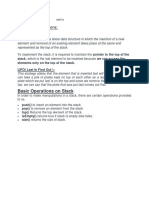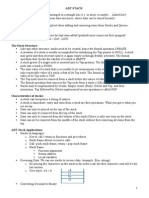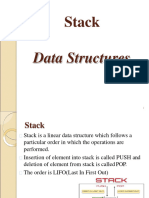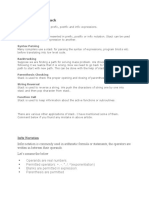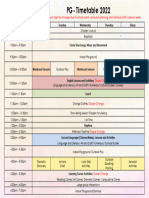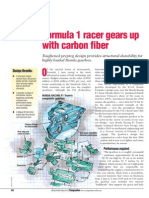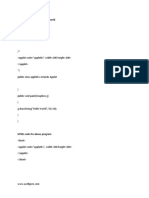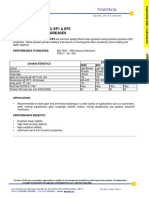0% found this document useful (0 votes)
148 views54 pagesData Structures & Algorithms: Lecture # 3
The document discusses stacks and their implementation and applications. It begins by describing what stacks are, how they are represented, and basic operations like push and pop. It then covers stack applications like function calls and reversing data. Key aspects of stacks like LIFO behavior and terminology are explained. The document provides pseudocode for reversing a string using a stack. It also discusses evaluating expressions using stacks, including infix to postfix conversion. Implementation of stacks using arrays is described along with algorithms for basic stack operations.
Uploaded by
Vicky ButtCopyright
© Attribution Non-Commercial (BY-NC)
We take content rights seriously. If you suspect this is your content, claim it here.
Available Formats
Download as PPT, PDF, TXT or read online on Scribd
0% found this document useful (0 votes)
148 views54 pagesData Structures & Algorithms: Lecture # 3
The document discusses stacks and their implementation and applications. It begins by describing what stacks are, how they are represented, and basic operations like push and pop. It then covers stack applications like function calls and reversing data. Key aspects of stacks like LIFO behavior and terminology are explained. The document provides pseudocode for reversing a string using a stack. It also discusses evaluating expressions using stacks, including infix to postfix conversion. Implementation of stacks using arrays is described along with algorithms for basic stack operations.
Uploaded by
Vicky ButtCopyright
© Attribution Non-Commercial (BY-NC)
We take content rights seriously. If you suspect this is your content, claim it here.
Available Formats
Download as PPT, PDF, TXT or read online on Scribd
/ 54




